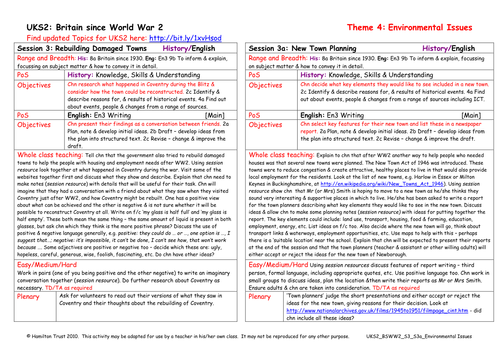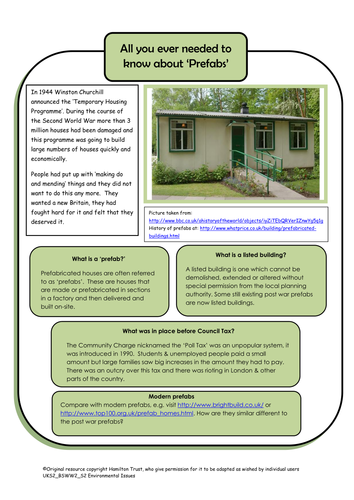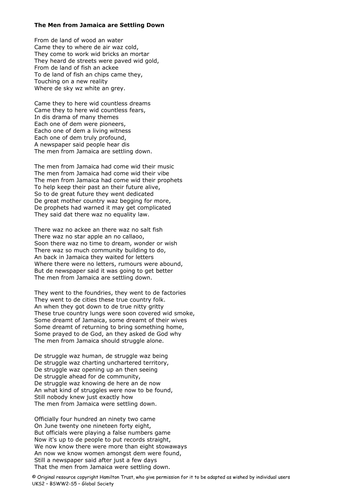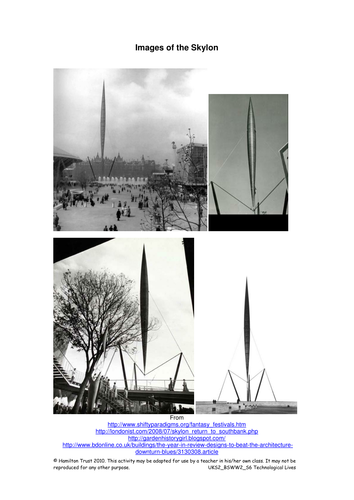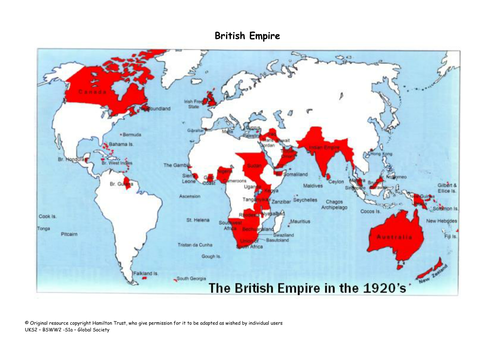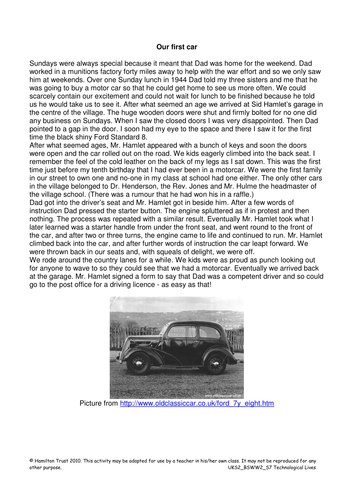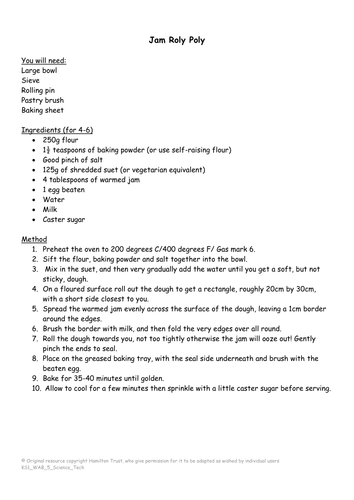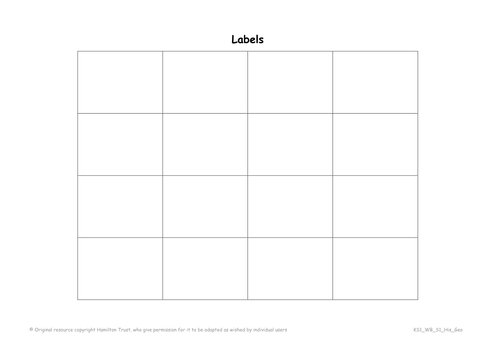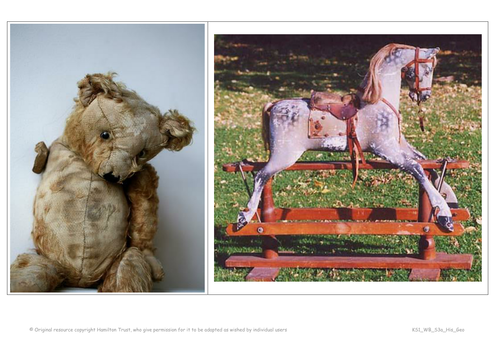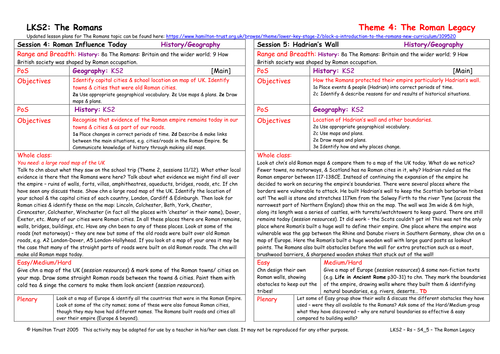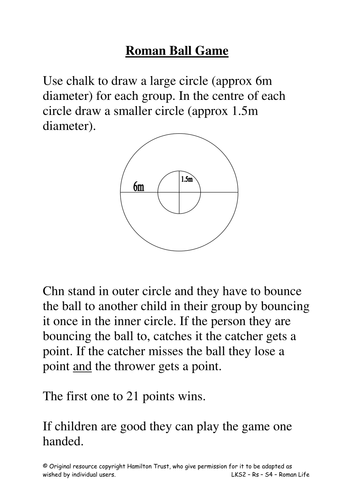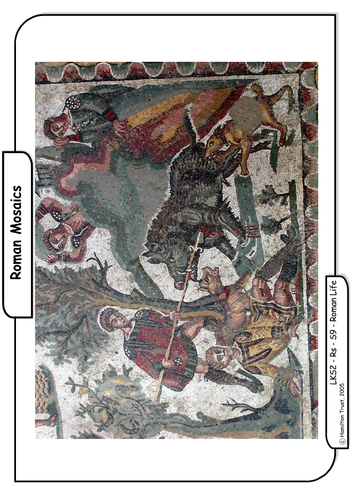
397Uploads
10041k+Views
11644k+Downloads
History

New Town Planning
Find out about the New Towns that were planned to help with housing shortages. Look at some examples. Children identify the key elements that they would like included in a new town, and then write a report for a new town planning committee.

Rebuilding Damaged Towns
After WW2 many towns that were badly damaged in the bombing needed to be re-built. Children research what happened in Coventry and consider what could be done to help re-build and re-construct the area. Present their findings as a conversation between friends.

Prefabs
Children understand that millions of houses were destroyed during WW2 and they needed to be replaced. Houses were designed that were pre-fabricated. They were quick to build; thousands were put up in the 1940s/1950s. Children choose key info needed to sell a prefab.

Notting Hill Carnival
Read Benjamin Zephaniah’s poem The Men from Jamaica are Settling Down. Discuss the treatment that migrants from the Caribbean received from some British people. Explain how this lead to riots and the first Notting Hill Carnival. Children design carnival costume.

Washing Machines and Spin Driers
Children look at labour saving household inventions, order picture of machines across the decades and then carry out an experiment to find out how spin driers work.

Festival Of Britain Architecture
Children look at Festival of Britain architecture especially the Skylon and Dome of Discovery. They choose to make a Skylon, Dome or to design their own futuristic piece of architecture.

Who Are The British People?
Discuss the diff peoples who came to Britain in the past and made it their home - Celts, Romans, Saxons, Vikings and Normans and how other peoples have continued to come since WW2. Start a class timeline and individual timelines using ICT about this.

History of Cars
Children listen to a memoir of an elderly person's first car and then look at modern day car brochures looking for features which are new, and write a list of features they would like to see in future cars.

Sporting South Africa: The Past
On 18th August 1964 South Africa’s invitation to the Olympic Games was withdrawn. What followed was nearly thirty years in the sporting wilderness. In this session children study key dates and events which are added to a timeline.

Cooking A 1950's Meal
Children have the opportunity to cook one course of a typical 1950s meal or to set the table. Discuss safety measures before children cook the shepherds’ pie, rice pudding or sponge pudding and custard. Will everyone have a taste of all three dishes?

Make a Map
Children learn all about Britain and the different countries that make it complete. They write simple labels and create their own personal map of Britain, positioning favourite places and familiar landmarks.
Suitable for Years 1 and 2.

How old is my toy?
How do we know that a toy is old? What happens to our toys when they get played with lots? Children explore different toys and look for the signs of age. They choose precise words and explain their reasoning in detail.
Suitable for Years 1 and 2.

London's Olympic Legacy
The Olympics is now the largest sporting event on Earth, but that was not always the case. Children compare today with its early London incarnations and investigate what happened to the facilities after the torch was extinguished!

London Olympics 1908 and 1948
2012 brings with it London’s third Summer Olympic Games! In this session children find out more about the games in 1908 and those in 1948. Through research of the past they discover what made them unique in so many ways.

London Olympics 1948
The second London Games were held in 1948. Again London only had 2 years to organise the games as they were awarded in 1946 after the 1944 Games were cancelled due to WWII. Children research facts and the legacy to be added to the timeline.

London Olympics 1908
Remind children that London has held the Olympics twice before. The first time was in 1908. Find out why London had only two years to prepare and research facts about the Games and the legacy left by London 1908.

Hannibal Crossing the Alps With Elephants
The story of Hannibal’s journey across the Alps with elephants is told and discussed. Children identify the Alps and surrounding countries on map and ponder the difficulties of the terrain in relation to this event. They make a collage of Hannibal’s journey.
Suitable for years 3 and 4.

Hadrian's Wall
Children study old Roman maps and look at the walls that the Romans built to protect their empire. They study Hadrian’s wall and look at pictures. They create their own map of the boundaries of the Roman empire, drawing walls, marking rivers, coasts etc.
Suitable for years 3 and 4.

Roman Ball Games For Children
Children explore the life lived by Roman children, rich and poor. They think about schooling and also about their leisure times, comparing the life of children in Roman times with that of children in Britain today. Then they play Roman ball games.
Suitable for years 3 and 4.

Researching Roman mosaics
Children research the internet and non-fiction texts and look for information about Roman mosaics. They talk about the images that Romans used in creating these, and then use a software package to create their own mosaics. Some chn do further research.
Suitable for years 3 and 4.

